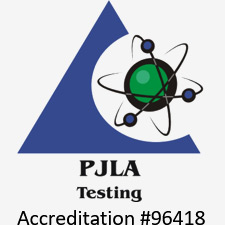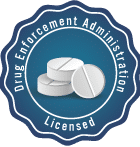PFAS (per- and polyfluoroalkyl substances) are pervasive environmental contaminants that pose significant challenges for monitoring and mitigation. Understanding how PFAS analysis is carried out is crucial for addressing contamination in consumer products, water sources, soil, and air. At Jordi Labs, we utilize state-of-the-art analytical methods to ensure accurate detection and quantification of these complex compounds, empowering industries and regulators to take informed actions.
The Fundamentals of PFAS Analysis
PFAS analysis hinges on sophisticated techniques tailored to their unique chemical properties. These compounds are highly stable, resistant to degradation, and capable of bioaccumulation, and low limits of detection prescribed by regulatory standards necessitate methods that are both precise and sensitive.
Liquid Chromatography-Tandem Mass Spectrometry (LC-MS/MS, a.k.a. QqQ-LCMS)
As the gold standard in PFAS analysis, LC-MS/MS excels in sensitivity and specificity. This method involves:
- Separation: PFAS compounds are isolated using liquid chromatography.
- Detection: Tandem mass spectrometry identifies and quantifies compounds by their mass-to-charge ratios at part per billion concentrations.
Applications include:
- Testing drinking water using methodology based off of EPA Method 537.1, 533, and 1633.
- Monitoring surface water and groundwater for environmental safety.
Solid Phase Extraction (SPE)
SPE is an essential preparatory step before LC-MS/MS analysis via certain EPA methods. It enhances detection by concentrating PFAS compounds and removing potential interferences. The process involves:
- Filtering the sample through a solid medium to trap PFAS.
- Eluting the analytes for subsequent analysis.
This preparation step is vital for achieving ultra-low detection limits in complex matrices such as wastewater.
Expanding the Analytical Toolkit
While LC-MS/MS dominates, alternative and complementary methods are crucial for comprehensive PFAS analysis.
Quadrupole Time-of-Flight (QTOF-LCMS)
High resolution mass spectrometry (HRMS), such as Quadrupole Time-of-Flight (QTOF-LCMS) mass spectrometry systems, provides:
- Non-targeted analysis: Detection of thousands of known and unknown PFAS.
- Structural elucidation: Characterizing novel PFAS compounds in emerging contamination scenarios.
This approach is invaluable for research and discovery of PFAS in previously untested environmental media.
Combustion Ion Chromatography (CIC)
CIC assesses total adsorbable organic fluorine (AOF), offering insights into overall fluorine levels rather than individual compounds. The process includes:
- Combustion: Breaking down present carbon-fluorine bonds to release fluoride ions.
- Ion chromatography: Measuring fluoride content.
CIC is particularly useful in evaluating PFAS presence when detailed compound-specific data isn’t required.
Gas Chromatography Mass Spectrometry (GCMS) & Headspace Analysis
Additional information can be gathered on volatile and semi-volatile PFAS presence using GCMS:
- Non-targeted screening: Screening and detection of volatile/semi-volatile PFAS in a variety of sample types, including extractable solids, liquid, and air samples.
- Targeted quantitation: Quantitation of PFAS using tandem GC-MS/MS (QqQ-GCMS).
EPA-Validated Methods for Drinking Water
Regulatory compliance drives PFAS analysis in drinking water. Key EPA methods include:
- EPA Method 537.1: Detects a broad spectrum of PFAS using SPE and QqQ-LCMS (LC-MS/MS).
- EPA Method 533: Focuses on short-chain PFAS compounds, incorporating isotope dilution and SPE for enhanced accuracy.
- EPA Method 1633: Determines PFAS in various environmental samples (aqueous, solid, biosolid, and tissue), using QqQ-LCMS (LC-MS/MS) and isotope dilution for accurate quantitation.
These methods underpin initiatives like the Unregulated Contaminant Monitoring Rule (UCMR 5), which aims to assess PFAS prevalence in public water systems.
PFAS Analysis Beyond Water: Versatility in Applications
While water testing is critical, PFAS analysis extends to soil, air, and consumer products. For example:
- Soil Analysis: Detecting PFAS in agricultural land to mitigate food chain contamination.
- Medical Devices: Jordi Labs’ chemical characterization services, adhering to ISO 10993-18, help manufacturers assess PFAS presence in device materials.
- Industrial Products: Screening PFAS in aqueous film-forming foams (AFFFs) used in firefighting.
Jordi Labs’ Expertise in PFAS Analysis
At Jordi Labs, our specialized methods support industries facing stringent PFAS regulations:
- Chemical Characterization: Identifying PFAS in medical devices and consumer products to ensure compliance and safety.
- Mass Spectral Analysis: Differentiating compounds efficiently to streamline product development.
- Extractables and Leachables Testing: Evaluating new materials replacing PFAS-containing components.
Addressing Challenges and Moving Forward
PFAS analysis is not without its hurdles. Challenges include:
- Detecting trace levels in complex environmental matrices.
- Differentiating structurally similar PFAS compounds.
Continued innovation in analytical techniques, coupled with regulatory alignment, is essential for tackling PFAS contamination effectively.
Final Thoughts
Understanding PFAS analysis is pivotal in mitigating exposure risks and preserving environmental and public health. Jordi Labs remains at the forefront of this effort, combining technical precision with regulatory expertise. For industries and researchers grappling with PFAS challenges, our comprehensive solutions provide a reliable path to clarity and compliance.
Let us partner with you in addressing PFAS concerns. Contact Jordi Labs today to learn more about our advanced testing capabilities and how we can support your needs.





